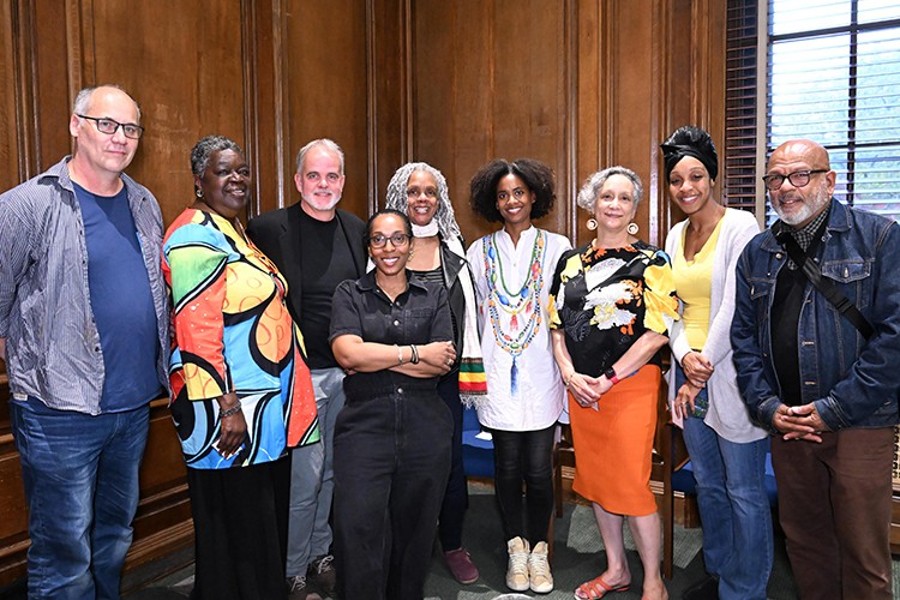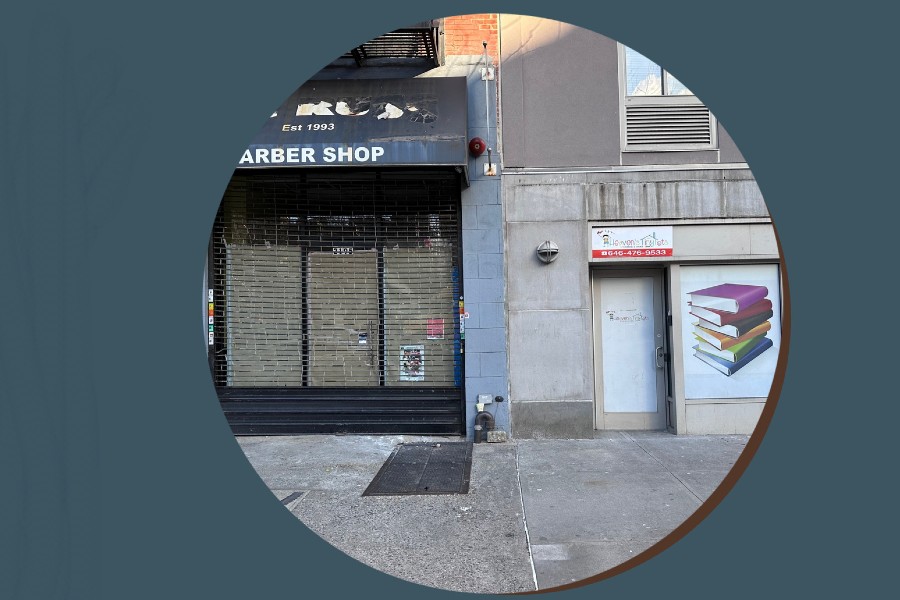 Zora Neale Hurston (January 7, 1891 – January 28, 1960) was an American folklorist and author during the time of the Harlem Renaissance, best known for the 1937 novel Their Eyes Were Watching God. In 2002, scholar Molefi Kete Asante listed Zora Neale Hurston on his list of 100 Greatest African Americans.Background and career
Zora Neale Hurston (January 7, 1891 – January 28, 1960) was an American folklorist and author during the time of the Harlem Renaissance, best known for the 1937 novel Their Eyes Were Watching God. In 2002, scholar Molefi Kete Asante listed Zora Neale Hurston on his list of 100 Greatest African Americans.Background and career
Hurston was “purposefully inconsistent in the birth dates she dispensed during her lifetime, most of which were fictitious.” For a long time, scholars believed that she was born in Eatonville, Florida in 1901.
In 1993, filmmaker Kristy Andersen established that Hurston had been born in Notasulga, Alabama and moved to Eatonville at a young age, spending her childhood there. It was Eatonville, the first all-Black town to be incorporated in the United States, that inspired her imagination.
Zora was the fifth of eight children of John Hurston and Lucy Ann Hurston (née Potts). Her father was a Baptist preacher, tenant farmer, and carpenter, and her mother was a schoolteacher. When she was three, Zora’s family moved to Eatonville, an all-Black town with a population of 125. Her father later became mayor of the town, which Zora would glorify in her stories as a place black Americans could live as they desired, independent of white society. Mrs. Hurston died in 1904 when Zora was 13.
Hurston graduated from Morgan Academy, the high school division of Morgan College, in 1918. Later that year, she began her undergraduate studies at Howard University. While at Howard, Hurston became one of the earliest initiates of Zeta Phi Beta Sorority and co-founded The Hilltop, the University’s student newspaper. Hurston left Howard in 1924, unable to support herself.
Hurston was offered a scholarship to Barnard College where she received her B.A. in anthropology in 1927. While she was at Barnard, she conducted ethnographic research under her advisor, the noted anthropologist Franz Boas of Columbia University. She also worked with Ruth Benedict as well as fellow anthropology student Margaret Mead.
In 1925, shortly before entering Barnard, Hurston became one of the leaders of the literary renaissance happening in Harlem, producing the short-lived literary magazine Fire!! along with Langston Hughes and Wallace Thurman. This literary movement became the center of the Harlem Renaissance.
Hurston applied her ethnographic training to document African American folklore in her critically acclaimed book Mules and Men (1935) along with fiction (Their Eyes Were Watching God) and dance, assembling a folk-based performance group that recreated her Southern tableau, with one performance on Broadway. Hurston was awarded a Guggenheim Fellowship to travel to Haiti and conduct research on conjure in 1937. Her work was significant because she was able to break into the secret societies and expose their use of drugs to create the Vodun trance, also a subject of study for fellow dancer/anthropologist Katherine Dunham who was then at the University of Chicago.
In 1954 Hurston was unable to sell her fiction but was assigned by the Pittsburgh Courier to cover the small-town murder trial of Ruby McCollum, the prosperous black wife of the local bolita racketeer, who had killed a racist white doctor. Hurston also contributed to Woman in the Suwanee County Jail, a book by journalist and civil rights advocate William Bradford Huie.
Hurston spent her last decade as a freelance writer for magazines and newspapers. She worked in a library in Cape Canaveral, Florida, and as a substitute teacher and maid in Fort Pierce. During a period of financial and medical difficulties, Hurston was forced to enter St. Lucie County Welfare Home, where she suffered a stroke and died of hypertensive heart disease. She was buried in an unmarked grave in the Garden of Heavenly Rest cemetery in Fort Pierce. In 1973 African-American novelist Alice Walker and literary scholar Charlotte Hunt found an unmarked grave in the general area where Hurston had been buried and decided to mark it as hers. The publication of Walker’s article “In Search of Zora Neale Hurston” in the March 1975 issue of Ms. Magazine revived interest in her work and helped spark a Hurston renaissance. Hurston’s house in Fort Pierce is a National Historic Landmark.
Hurston was a Republican who was generally sympathetic to the Old Right and a fan of Booker T. Washington’s self-help politics. She disagreed with the philosophies (including Communism and the New Deal) supported by many of her colleagues in the Harlem Renaissance, such as Langston Hughes, who wrote several poems in praise of the Soviet Union. Despite much common ground with the Old Right in domestic and foreign policy, Hurston was not a social conservative. She was essentially a libertarian in philosophy. Her writings show skepticism toward traditional religion and affinity for feminist individualism. In this respect, her views were similar to two libertarian novelists who were her contemporaries, Rose Wilder Lane and Isabel Paterson.
In 1952, Hurston supported the presidential campaign of Senator Robert A. Taft. Like Taft, Hurston was against FDR’s New Deal policies. She also shared his opposition to the Roosevelt/Truman interventionist foreign policy. In the original draft of her autobiography, Dust Tracks on a Road, Hurston compared the U.S. government to a “fence” in stolen goods and to a Mafia-like protection racket. Hurston thought it ironic that the same “people who claim that it is a noble thing to die for freedom and democracy … wax frothy if anyone points out the inconsistency of their morals. … We, too, consider machine gun bullets good laxatives for heathens who get constipated with toxic ideas about a country of their own.” Roosevelt “can call names across an ocean” for his four freedoms, but he did not have “the courage to speak even softly at home.” When Truman dropped the atomic bombs on Japan, she called him “the Butcher of Asia.”
Hurston opposed the Supreme Court ruling in the Brown v. Board of Education case of 1954. She felt that if separate schools were truly equal (and she believed that they were rapidly becoming so) educating black students in physical proximity to white students would not result in better education. In addition, she worried about the demise of black schools and black teachers as a way to pass on cultural tradition to future generations of African-Americans. She voiced this opposition in a letter, “Court Order Can’t Make the Races Mix,” that was published in the Orlando Sentinel in August 1955. Hurston had not reversed her long-time opposition to segregation. Rather, she feared that the Court’s ruling could become a precedent for an all-powerful federal government to undermine individual liberty on a broad range of issues in the future.
Hurston’s work slid into obscurity for decades, for a number of reasons, both cultural and political.
Many readers objected to the representation of African American dialect in Hurston’s novels. Her stylistic choices in terms of dialogue were influenced by her academic experiences. Thinking like a folklorist, Hurston strove to represent speech patterns of the period which she documented through ethnographic research. For example (Amy from the opening of Jonah’s Gourd Vine):
- “Dat’s a big ole resurrection lie, Ned. Uh slew-foot, drag-leg lie at dat, and Ah dare yuh tuh hit me too. You know Ahm uh fightin’ dawg and mah hide is worth money. Hit me if you dare! Ah’ll wash yo’ tub uh ‘gator guts and dat quick.”
Some critics during her time felt that Hurston’s decision to render language in this way caricatured African American culture. In more recent times, however, critics have praised Hurston for her artful capture of the actual spoken idiom of the day.
In particular, a number of those that were associated with her in the growth and influence of the Harlem Renaissance were critical of her later writings, on the basis that they did not agree with or further the position of the overall movement. One particular criticism, much noted, came from Richard Wright in his review of Their Eyes Were Watching God.
- “… The sensory sweep of her novel carries no theme, no message, no thought. In the main, her novel is not addressed to the Negro, but to a white audience whose chauvinistic tastes she knows how to satisfy. She exploits that phase of Negro life which is “quaint,” the phase which evokes a piteous smile on the lips of the “superior” race.”.
The conservative, more accurately libertarian, politics of Hurston’s work also hindered the public’s reception of her books. During the 1930s and 1940s when her work was published, the pre-eminent African American author was Richard Wright. Unlike Hurston, Wright wrote in explicitly political terms, as someone who had become disenchanted with communism, using the struggle of African Americans for respect and economic advancement as both the setting and the motivation for his work. Other popular African American authors of the time, such as Ralph Ellison, were also aligned with Wright’s vision of the struggle of African Americans. Hurston’s work, which did not engage these political issues, did not fit in with this struggle.
With the publication of the ambitious novel Seraph on the Suwanee in 1948, Hurston burst through the tight bounds of contemporary black writing in yet another seemingly apolitical way. This is a tale of poor whites struggling in rural Florida’s citrus industry. Black characters recede to the background. Neither the black intelligentsia nor the white mainstream of the late 1940s could accept the notion of a black writer speaking through white characters. Panned across the board, Seraph ended up being Hurston’s last major literary effort as she retreated to small-town Florida for the rest of her life. The text stands out, as she remarked herself, as a testimony to her own self-definition as a regional as much as a black writer.
In academia, anthropologists often disdained Hurston’s works as fiction, and thus unworthy of inclusion on anthropological reading lists. Feminist critics of academia have observed that a number of novels and non-fiction works of confessional literature written by women with anthropological training that draw upon their observations and experiences were sidelined in this fashion. Hurston’s work was, in this respect, treated in the same manner as some books by Elsie Clews Parsons, Ella Deloria, and Laura Bohannan, among others. At the same time, when well known male anthropologists began to experiment with literary form and style in ethnography, they were often hailed for their work. Many critics therefore perceive the lack of academic acclaim for Hurston’s work to indicate a form of institutional sexism. Hurston’s books have since been discussed and celebrated not only as African American literature, but as feminist literature as well.
The article “In Search of Zora Neale Hurston” by Alice Walker was published in the March 1975 issue of Ms. Magazine. This article revived interest in her work. The re-discovery of Hurston’s work coincided with the popularity and critical acclaim of authors such as Toni Morrison, Maya Angelou, and Walker herself, whose works are centered on African American experiences which include, but do not necessarily focus upon, racial struggle.[citation needed]
Biographies of Hurston include Zora Neale Hurston: A Literary Biography by Robert Hemenway, Wrapped in Rainbows by Valerie Boyd, and Speak So You Can Speak Again by Hurston’s niece, Lucy Anne Hurston. Her hometown of Eatonville, Florida celebrates her life in an annual festival.
In 1989 PBS aired a drama based on Hurston’s life titled My Name is Zora.
The 2004 film Brother to Brother, set in part during the Harlem Renaissance, featured Hurston (portrayed by Aunjanue Ellis).
Their Eyes Were Watching God was adapted for a 2005 film of the same title by Oprah Winfrey’s Harpo Productions, with a teleplay by Suzan-Lori Parks. The film starred Halle Berry as Janie Starks.
On April 9, 2008 PBS broadcast a 90 minute documentary Zora Neale Hurston: Jump at the Sun, written and produced by filmmaker Kristy Andersen, as part of their American Masters series.
Become a Harlem Insider!
By submitting this form, you are consenting to receive marketing emails from: Harlem World Magazine, 2521 1/2 west 42nd street, Los Angeles, CA, 90008, https://www.harlemworldmagazine.com. You can revoke your consent to receive emails at any time by using the SafeUnsubscribe® link, found at the bottom of every email. Emails are serviced by Constant Contact








